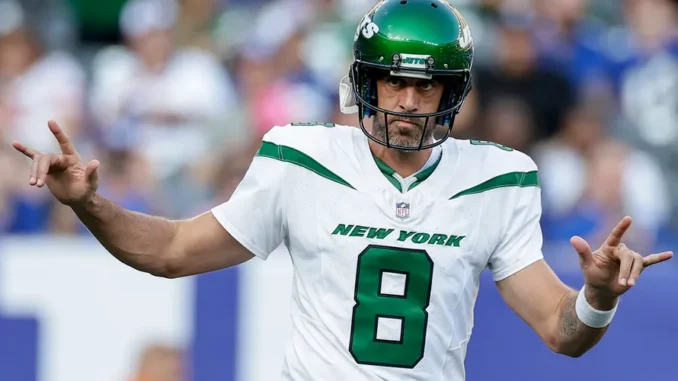
“If Lambeau Field stands as sacred ground in the National Football League — was it this end zone or the distant one where Bart Starr scored the decisive touchdown in ’67? — then it was fitting that the NFL elite congregated there in early September to herald the beginning of a fresh season. The preceding months had been consumed by acrimonious negotiations between the league’s 32 owners and the players’ union, resulting in an owners’ lockout and the cancellation of training camp. At one point, even the regular season appeared in jeopardy until the two sides hammered out a new collective bargaining agreement just six weeks before opening Sunday.
The inaugural game of the season pitted the two most recent Super Bowl victors, the Green Bay Packers and the New Orleans Saints, against each other. As the teams warmed up on a crisp autumn evening, Lambeau exuded the atmosphere of a homecoming celebration. There was Starr proudly waving a Green Bay Packer flag, NFL Commissioner Roger Goodell exchanging pleasantries with New Orleans Saints coach Sean Payton, and Bob Costas and Tony Dungy anchoring the NBC pregame show.
Standing nearby was a figure unfamiliar to many casual fans but instrumental in making the night happen: Mark H. Murphy, the president and CEO of the Packers. Murphy epitomizes the classic rags-to-riches narrative where a shop floor worker ascends to oversee the entire operation. While there have been former players who have owned teams, such as Packers’ founder Curly Lambeau, Murphy is the sole player-turned-CEO to claim a Super Bowl victory in both capacities, having won as a player with Washington in 1983 and as Green Bay’s CEO last season.
Attired in a black suit, paisley tie adorned with hints of green and yellow, charcoal trousers, and black shoes, Murphy strolled along the grass near the white-chalked sideline with the gait of a retired athlete. As the Packers concluded their warm-up drills and gathered for a pregame huddle, Murphy remarked, “That camaraderie with your teammates, it’s impossible to match that outside the game, anywhere else in life. They should savor it because the transition from being a player is difficult, really challenging.”
Few players in NFL history have navigated that transition as remarkably as Murphy. His presence on the field, at the helm of America’s most successful team in its most popular sport, speaks volumes not only about him but also about the unique brilliance of the organization he leads.
The Green Bay Packers are a historical, cultural, and geographical anomaly — a publicly traded corporation in a league that prohibits them, a highly profitable company whose shareholders are barred by corporate bylaws from profiting, and a franchise that has thrived despite being situated in the smallest market in the NFL. With a population of 102,000, Green Bay would be considered small even for a Triple-A baseball franchise.
Of all the original NFL franchises — based in locales like Muncie, Ind.; Rochester, N.Y.; Massillon and Canton, Ohio; and Rock Island, Ill. — Green Bay stands alone as the only small-town team still in existence. The Packers have not merely survived but have become the NFL’s preeminent organization, hailed by ESPN in 2011 as the best franchise in all of sports.
The Packers have sold out 295 consecutive home games, and there are 80,000 names on the waiting list for season tickets. Everywhere one looks in Green Bay, there is Packers signage — at prominent spots like Brett Favre’s Steakhouse just off Holmgren Way and less conspicuous locations like the Pho #1 Noodle & Grill on Oneida Street. Green Bay residents take pride in annually purchasing their weight in Packers merchandise.
The Packers led the NFL in apparel sales last year — with the top two selling jerseys belonging to Packers Aaron Rodgers and Clay Matthews — raking in $27 million solely through the pro shop inside Lambeau Field and the website Packers.com. All this merchandise and the perpetual sellouts made the Packers the 11th highest-earning team in the NFL in 2011, with total revenue exceeding $280 million, despite being located in by far the smallest city among the league’s 32 teams. (Ironically, this success means that Green Bay contributes to the NFL reserve fund established to redistribute revenue from larger market teams to smaller market teams.)”
Leave a Reply